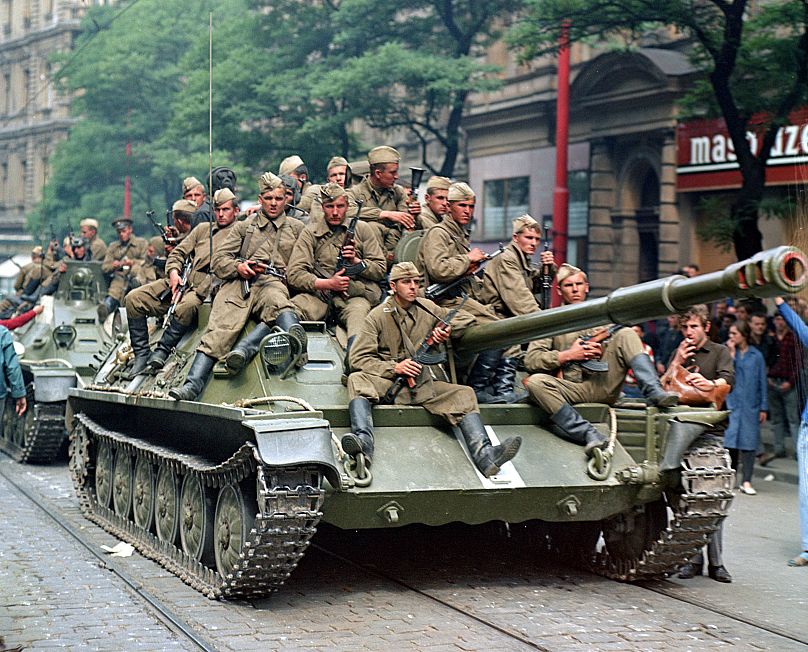Czech protests channel the spirit of '68 to call for PM's resignation
Thousands took to the streets in the Czech Republic on 21 August on the anniversary of the 1968 Soviet invasion that crushed the Prague Spring.
The protests also marked the suppression of a pro-democracy protest a year later in 1969, when five people were killed and dozens injured.
It would be another two decades before Czechoslovakia would emerge, along with the rest of Europe, from behind the Iron Curtain with the destruction of the Berlin Wall and the fall of the Soviet Union.
But as well as looking to the past, protesters in Prague were looking to the present, as anger builds against Czech Republic Prime Minister Andrej Babis over corruption allegations.
What happened in 1968?
The night of the 20-21 August 1968 was a watershed moment, proving that the Soviet Union would still not tolerate dissent 12 years after the brutal suppression of the Hungarian revolution in 1956.
It was also further evidence that the Warsaw Pact, signed in 1955, would be sacrosanct under hard-line Soviet Premier Leonid Brezhnev.
It would be another two decades before the fall of the Berlin Wall but cracks in the Warsaw Pact continued to emerge. The Prague intervention in 1968 was criticised by Romania and Yugoslavia, both signatories to the pact, and was never forgotten in Czechoslovakia.
Just as 1956 remains a powerful symbol for Hungarians over six decades later, so the Prague Spring of 1968 remains a source of pride and identity in both the Czech Republic and Slovakia.
What was the Warsaw Pact?
It was designed to rival the North Atlantic Treaty Organization (NATO), which was signed in 1949 by the United States, Canada and Western European nations, including West Germany.
The Warsaw Pact was signed in 1955 by the Soviet Union, Albania, Hungary, Bulgaria, Poland, Romania and the German Democratic Republic.
As well as a promise to defend each other in the event of an attack, part of the deal was a promise that nations would not interfere in each other's affairs.
But within a year the Soviet Union had moved to crush a popular uprising in Hungary in 1956.
What happened in 1968?
Since January 5, 1968, when he was elected leader of the Communist Party, Alexander Dubcek had pushed through democratic reforms, including moves to liberalise the economy, release political prisoners, end restrictions on freedom of speech, and even hold elections in Czechoslovakia.
Dubcek had tried to convince Brezhnev that the reforms would not be a threat to either the Soviet Union or the Warsaw Pact, but the Soviet premier didn't agree. He sent 200,000 soldiers and 2,000 tanks into the country, with a further 300,000 troops in the second wave.
Unarmed Czechoslovak students and protesters confronted Soviet soldiers and tanks with flowers and banners, in pictures that were beamed across the world.
Initially thrown in jail, Dubcek was forced to reverse the changes he had introduced in Czechoslovakia. The following year he was replaced by Gustav Husak, a former ally, who worked to bring it back in line with Soviet orthodoxy.
What happened to Alexander Dubcek?
After being forced to roll back his reforms and then replaced as leader by his former ally, Dubcek spent years in the political wilderness, first as ambassador to Turkey and later as an official in the forestry administration.
But in 1989, with the breakup of the Soviet Union and beginning of Czechoslovakia's so-called Velvet Revolution, Dubcek returned to political life and was elected speaker of the house in the country's first democratic government.
In 1992, he was killed in an automobile accident, just a year before the breakup of Czechoslovakia. Although he opposed the move, he had been tipped as a possible first president of his native Slovakia in the weeks before his death.












